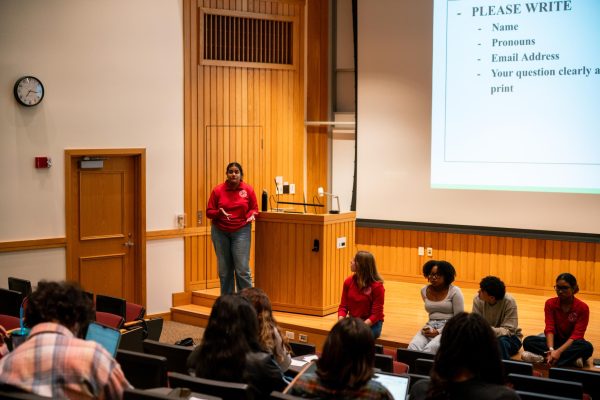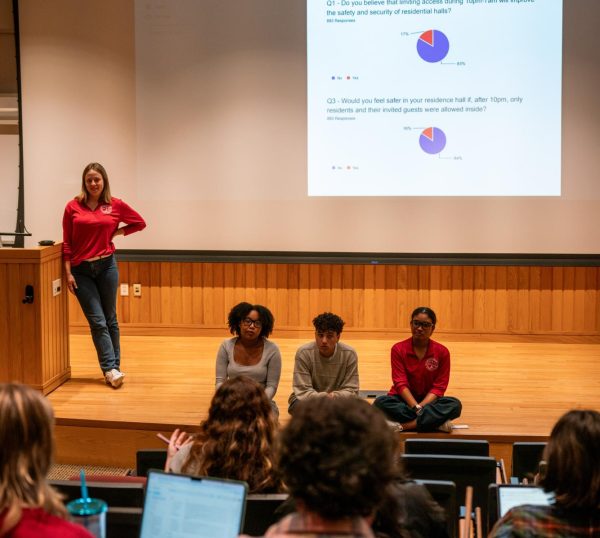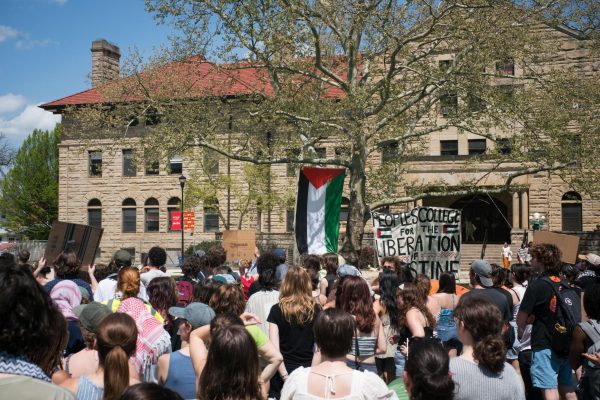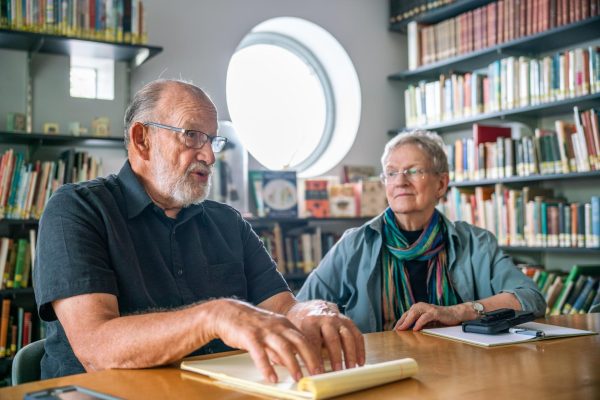Faculty Research Psychological and Economic Impacts of COVID-19
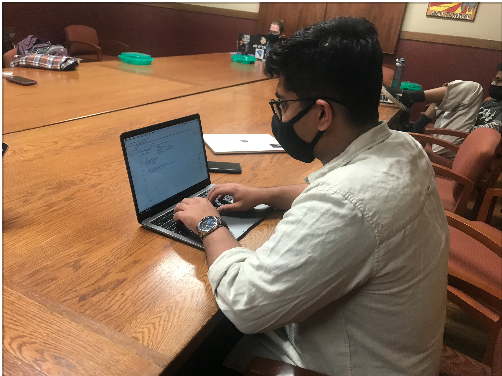
Student peruses research related to the COVID-19 pandemic
One year into the COVID-19 pandemic, many questions remain about the virus itself and its impact on society. To find answers, Oberlin faculty across departments have been leveraging their existing academic interests to better understand the pandemic. Across disciplines such as psychology, environmental studies, and economics, their work has contributed to a growing body of research and understanding.
Cindy Frantz, professor of psychology and environmental studies, is investigating COVID-19’s impact on perceptions of climate change action. When the pandemic lockdown curbed transportation and commercial activity, many areas around the world saw short-term improvements in environmental health. News outlets highlighted these developments, sharing stories about decreased carbon emissions and cleaner water with the public.
“[These news stories] made me wonder whether these examples of successful collective human behavior change, and nature’s quick response, might make people more hopeful and feel greater efficacy about taking action on climate change,” Frantz wrote in an email to the Review.
Through online sampling, Frantz has collected data on how people think about this issue. She has conducted this project with the help of many students, including College fourth-years Jessie (Jingyi) Yuan and Mikaela de Lemos. Yuan and de Lemos recently presented the study’s findings at the 2021 Society for Personality and Social Psychology Annual Convention.
“We found that making an explicit connection between the COVID-19 lockdown in March 2020 and the resulting environmental ‘boost’ increased participants’ sense of response and performance efficacy at the individual, group, and government level,” de Lemos wrote in an email to the Review. “This means that after reading about how India’s environment bounced back due to COVID-19, people felt that they could and would take action to mitigate the effects of climate change.”
De Lemos notes that this messaging even increased a sense of efficacy and behavioral intention among climate change deniers. The study suggests that highlighting this link between collective behavioral change and environmental benefit could be a powerful tool in promoting climate change action.
“The global experience of COVID has proven that people around the world were able to make rapid behavior changes such as staying at home or wearing masks,” Yuan wrote in an email to the Review. “Acknowledging the ease of such behavior shifts and the positive impacts of them are crucial predictors of protective behaviors for the environment.”
Associate Professor of Economics Martin Saavedra is also researching COVID-19 by looking into the economic consequences of epidemics in the United States. In particular, he studies the “fetal origins hypothesis,” which posits that being in utero during a pandemic is linked to poorer adult labor market outcomes, in addition to adverse health effects. Factors like disease exposure and prenatal stress during early development may have consequences that aren’t apparent for years down the line. In other words, future wages, educational achievement, and occupational status can all be tied back, in part, to one’s environment before birth.
Recently, Saavedra co-authored an article comparing the COVID-19 pandemic to the 1918 influenza pandemic, a subject of renewed interest in the academic world. Though they are separated by over a century, the two pandemics bear major similarities — such as viral respiratory disease spreading rapidly through close contact, for example. Moreover, social distancing measures led to temporary business and school shutdowns in both cases.
The 1918 pandemic triggered an economic contraction, due in large part to disproportionately high mortality rates among working-age individuals. With COVID-19, however, people in this age group are among the most likely to survive the disease. For this reason, Saavedra and his co-authors do not foresee the current pandemic causing the same level of labor supply shock.
One key difference between the pandemics, he pointed out, is that Americans were used to lower life expectancy and worse health outcomes in 1918 than they are today.
“For example, the 1918 pandemic happened during a time when people were more accustomed to living with dangerous infectious disease and for that reason, society didn’t shut down as stringently as it did in March of 2020,” Saavedra wrote in an email to the Review.
Additionally, the coincidence of the influenza pandemic and the end of World War I makes it difficult to draw definitive conclusions. Even so, the parallels between the pandemics have challenged economists to think critically about what lies ahead.
As the coronavirus continues to mutate and spread, people worldwide remain wracked with uncertainty. Society’s understanding of the pandemic, however, is continually growing, and investigating these uncertain times across disciplines — as Frantz and Saavedra have — can offer models for a path forward.


